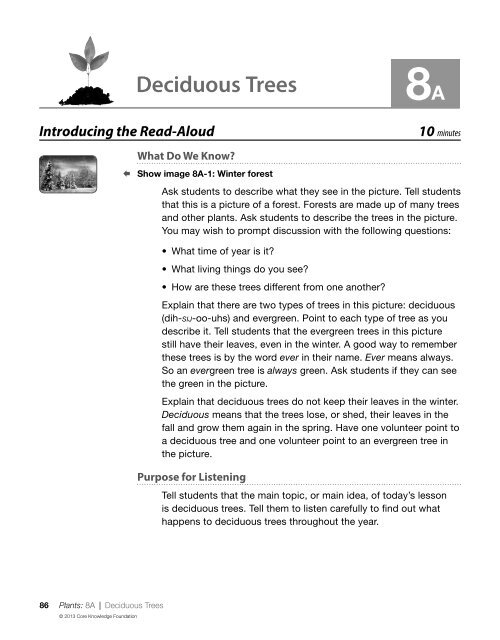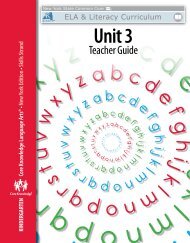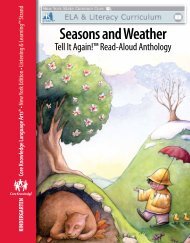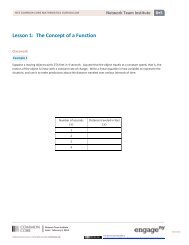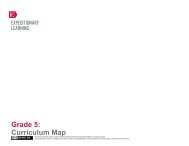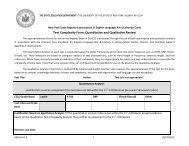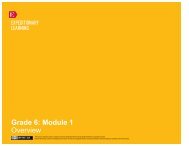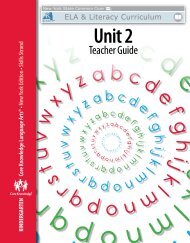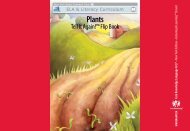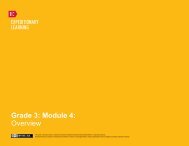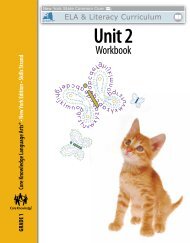Plants - EngageNY
Plants - EngageNY
Plants - EngageNY
You also want an ePaper? Increase the reach of your titles
YUMPU automatically turns print PDFs into web optimized ePapers that Google loves.
Introducing the Read-Aloud<br />
Deciduous Trees<br />
8A<br />
10 minutes<br />
What Do We Know?<br />
Show image 8A-1: Winter forest<br />
Ask students to describe what they see in the picture. Tell students<br />
that this is a picture of a forest. Forests are made up of many trees<br />
and other plants. Ask students to describe the trees in the picture.<br />
You may wish to prompt discussion with the following questions:<br />
• What time of year is it?<br />
• What living things do you see?<br />
• How are these trees different from one another?<br />
Explain that there are two types of trees in this picture: deciduous<br />
(dih-SIJ-oo-uhs) and evergreen. Point to each type of tree as you<br />
describe it. Tell students that the evergreen trees in this picture<br />
still have their leaves, even in the winter. A good way to remember<br />
these trees is by the word ever in their name. Ever means always.<br />
So an evergreen tree is always green. Ask students if they can see<br />
the green in the picture.<br />
Explain that deciduous trees do not keep their leaves in the winter.<br />
Deciduous means that the trees lose, or shed, their leaves in the<br />
fall and grow them again in the spring. Have one volunteer point to<br />
a deciduous tree and one volunteer point to an evergreen tree in<br />
the picture.<br />
Purpose for Listening<br />
Tell students that the main topic, or main idea, of today’s lesson<br />
is deciduous trees. Tell them to listen carefully to find out what<br />
happens to deciduous trees throughout the year.<br />
86 <strong>Plants</strong>: 8A | Deciduous Trees<br />
© 2013 Core Knowledge Foundation


